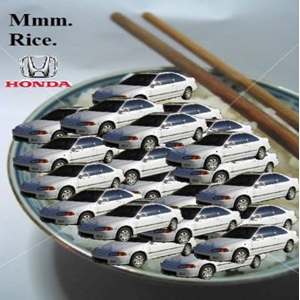There are no perfect steps, there are just excellent ways. I attended a supplementary seminar in Pulmonary Medicine few days back where lectures delivered excellently by a team of dexterous medical educators. “Dexterous” is less that a satisfactory adjective to point up how they suctioned common practices involving respiratory medicine which become boring hospital fundamentals yet they breath an moving copy to it. This case could be likened to how to get an x-ray view from a human being passing by in front of you. Though in medical world such view is impossible, that somehow describes the impact of the whole seminar to me. I am, however, not discouraged tracking how distant my week-long post-graduate clinical experience from those of the lecturers. In fact I find it an inspirational challenge to cope and beat. Sounds ambitious, but true. In medicine, which is often regarded as an art branching out of human life science, a clinician can be an artist in five ways: Expect this paragraph to be slightly twisted from the ones above as my main point in this post is to ascertain the beginner in me. I am a beginner in medicine and in self-motivation and in the world of writing in a blog. As beginner, I do not really need to be a conceiving artist always. Nor I am expected to be adept enough to train others. Though I am trying to be a conceiver and a trainer for procrastinators in this blogs, I prefer still to outsource opinions from others. Though not fungally always. I found out that in what ever move we do there is always no single perfect step known but reading and applying from more resources shows one excellent ways to face life in general. Even new researchers require review of related literature to support it. This post is sixth of a 7-part ellipsis series.
Drop by a critic below and declare “I don't agree with Wangbu.” After doing so, do not be wordless if you are still plead to comment again as I pocket sincere censure more than flattering lies. That would make this blog at high risk of obtaining injurious disapprovals, yet I’ll consent it to be. I am prepared to abort praises for a worthwhile bonding with a new knowledge, for which, I am tickling any reader to “Please supply earful advices for this blog on how to craft it to assist one and all procrastinators.” I endorse frank input.
How...
A Conceiving Artist. A research medical practitioner might think of, lay and breed fresh solutions to combat diseases and to decrease mortality. He might of course come out to be heroic since by being a conceiving artist is far from painless task despite the evolution of technology. Since they deal with unraveling on diseases that has been thought “for sure no cure,” some clinicians, public or self-confessed, uses this as confident step to grab a prize, local or Nobel, and print their names in encyclopedic pages.
An Adapting Artist. A clinic medical artist modifies established health care protocols to suit patient per patient cases. He has freedom to adapt redesign or more effectively update health promotion, diagnostic tools and therapeutic guidelines and make it fit date-place patients (ex. 2007-Philippines). The fun and gratification comes from patient’s improvement from certain ways you been able to touch them with your art.
An Training Artist. A theoretical and clinical instructor, medicine wise is a honorary job as physicians are more used to giving medical prescription than taking it. This group of people established the borders of medical practice first to the upcoming physicians, specialist or sub specialist and encouraging them to outsource opinions especially from the well established schools of thought.
A Community Artist. An altruistic caretaker of pulic health. The kind of med artist I would not chose to be not because I am far from being an altruist but because public health is generally a political entity.
A Mobilizing Artist. A medical practicioner reaching beyond medicine in influencing and inspiring people. Not specially sutable for a beginner like me.
Labels: action, ellipsis, medicine, outsourcing-opinions
Subscribe to:
Post Comments (Atom)








No comments:
Post a Comment